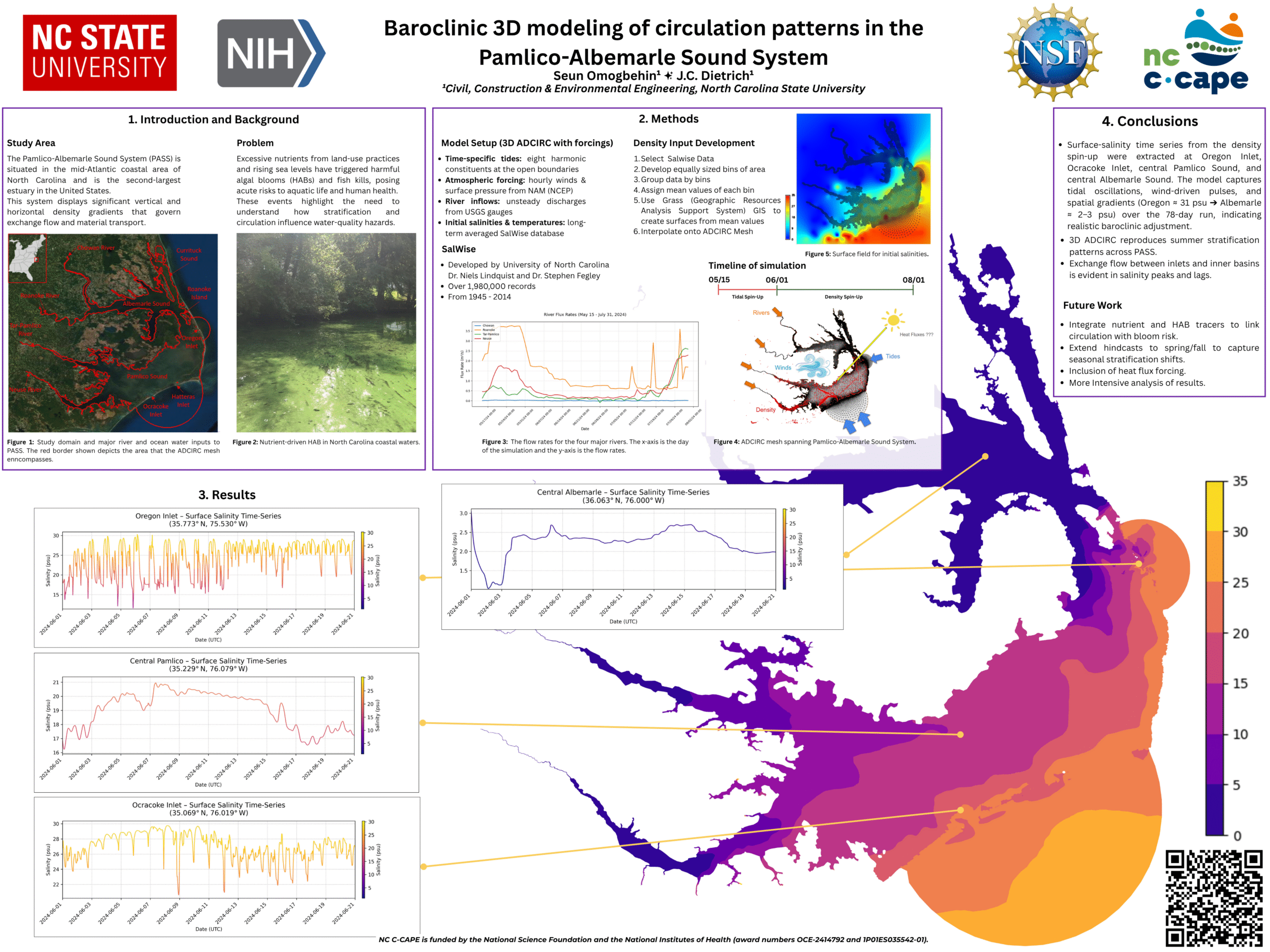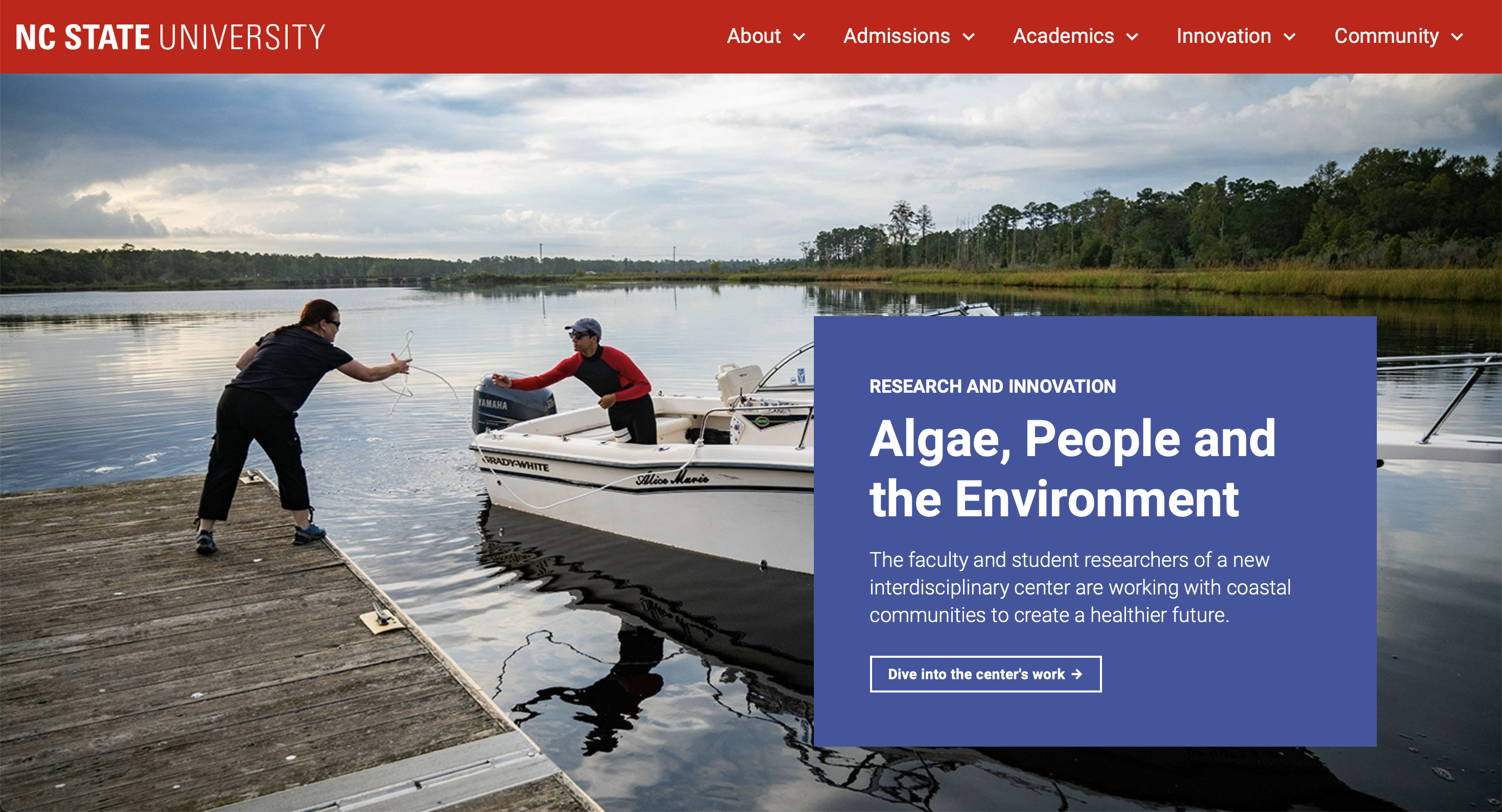
Modeling storm surge flooding for participatory transformation of barrier islands: Hatteras Island, NC, USA.

Neural Network Predictions of Flood Maps

Baroclinic 3D modeling of circulation patterns in the Pamlico-Albemarle Sound System


Modeling storm surge flooding for participatory transformation of barrier islands: Hatteras Island, NC, USA.

Neural Network Predictions of Flood Maps

Baroclinic 3D modeling of circulation patterns in the Pamlico-Albemarle Sound System

NC C-CAPE (and our fearless leader Astrid Schnetzer) were featured on the NC State homepage.
NC C-CAPE was featured on the NC State homepage. Lots of information and quotes from folks in the center, including great photos of our colleagues in the field and laboratory. It is fun to contribute to such a large, meaningful research effort.

“In the past few months, we’ve officially started to sample as NC C-CAPE,” [Barrett] Rose said. “It was a shock to see the magnitude of how much we were actually studying. It went from a small pilot study to a huge center effort.”
Data collection and analysis is only the first part of the work NC C-CAPE seeks to do. While harmful algal blooms are common in fresh waters across the U.S. and the world, major data gaps around the issue exist. [Astrid] Schnetzer’s data will inform NC C-CAPE’s other two projects, which focus on predicting the health risks of toxic algal blooms on mammals and humans, as well as considering how factors like climate change will affect future toxin levels in water and seafood.
“The most exciting aspect of NC C-CAPE for me is that the research doesn’t end where my expertise ends,” said Schnetzer. “What we learn from the field about algal toxins is handed to the next team to look at the bigger picture on the ecosystem level and in connection to human health.”

Obenour will lead a project with Dietrich and Natalie Nelson (Department of Biological and Agricultural Engineering) focused on the development of models to predict the transport of cyanotoxins — toxins produced by cyanobacteria released in algae blooms — in coastal environments. The models will focus on coastal North Carolina, especially the estuaries and sounds where freshwaters mix with saline waters. With the models, researchers will evaluate where cyanotoxins may collect and where they may originate. They will also evaluate scenarios of future climate, such as how changes in temperature, river flows, and sea levels may affect the transport of cyanotoxin.
According to Obenour, “the research will protect public health by identifying cyanotoxin hotspots and by informing management actions to reduce cyanotoxin risks in the future.”
2024/02/28 – NCSU College of Sciences
NC State Receives $6.9 Million From NSF, NIEHS to Fund New Oceans and Human Health Center

NC C-CAPE will carry out three research projects. The goal of the first project is to understand the dynamics of harmful algal blooms and learn more about the presence and distribution of microcystin — a liver toxin — across the Pamlico-Albemarle Sound System, the country’s largest lagoonal estuary. They will then link spatiotemporal patterns to the contamination of seafood. The second project will define how microcystin mixtures influence mechanisms of liver toxicity in regulatory-relevant mammalian models and at-risk human populations. In the third project, researchers will work to predict microcystin distributions in water and seafood based on various environmental controls — and assess exposure risk in a changing climate. They will do so by integrating diverse data sets and coastal circulation modeling within a probabilistic modeling framework.
A Schnetzer, SM Belcher, BB Cutts, DR Obenour, T Ben-Horin, JC Dietrich, C Hoyo, NG Nelson, R Paerl. “North Carolina Center for Coastal Algae, People, and Environment (NC C-CAPE).” National Institutes of Health, National Institute of Environmental Health Sciences, Centers for Oceans and Human Health 4: Impacts of Climate Change on Oceans and Great Lakes, 2024/02/01 to 2029/01/31, $6,913,382 (Dietrich: $467,482).